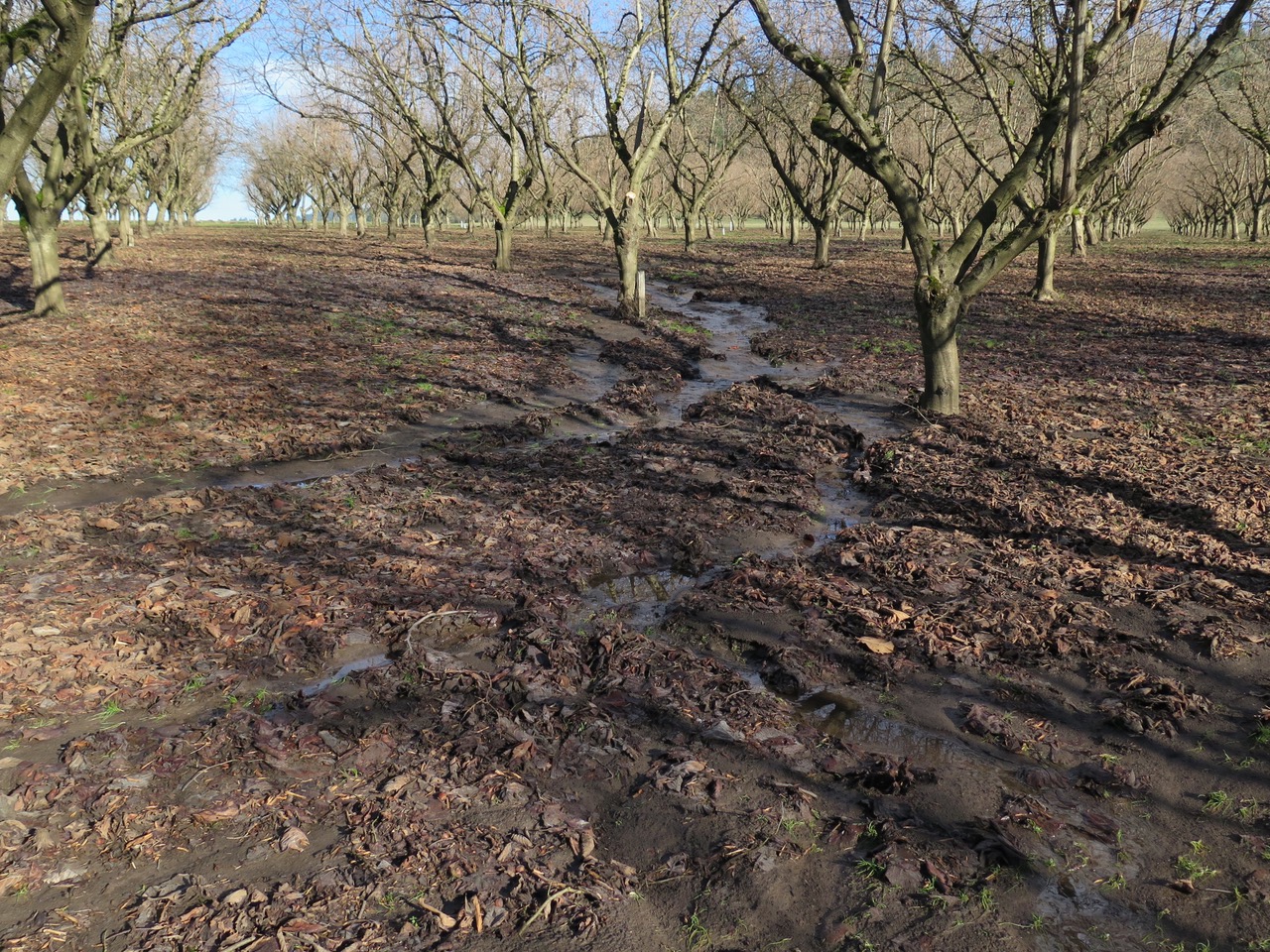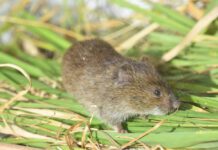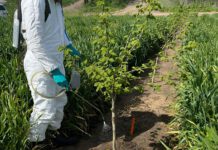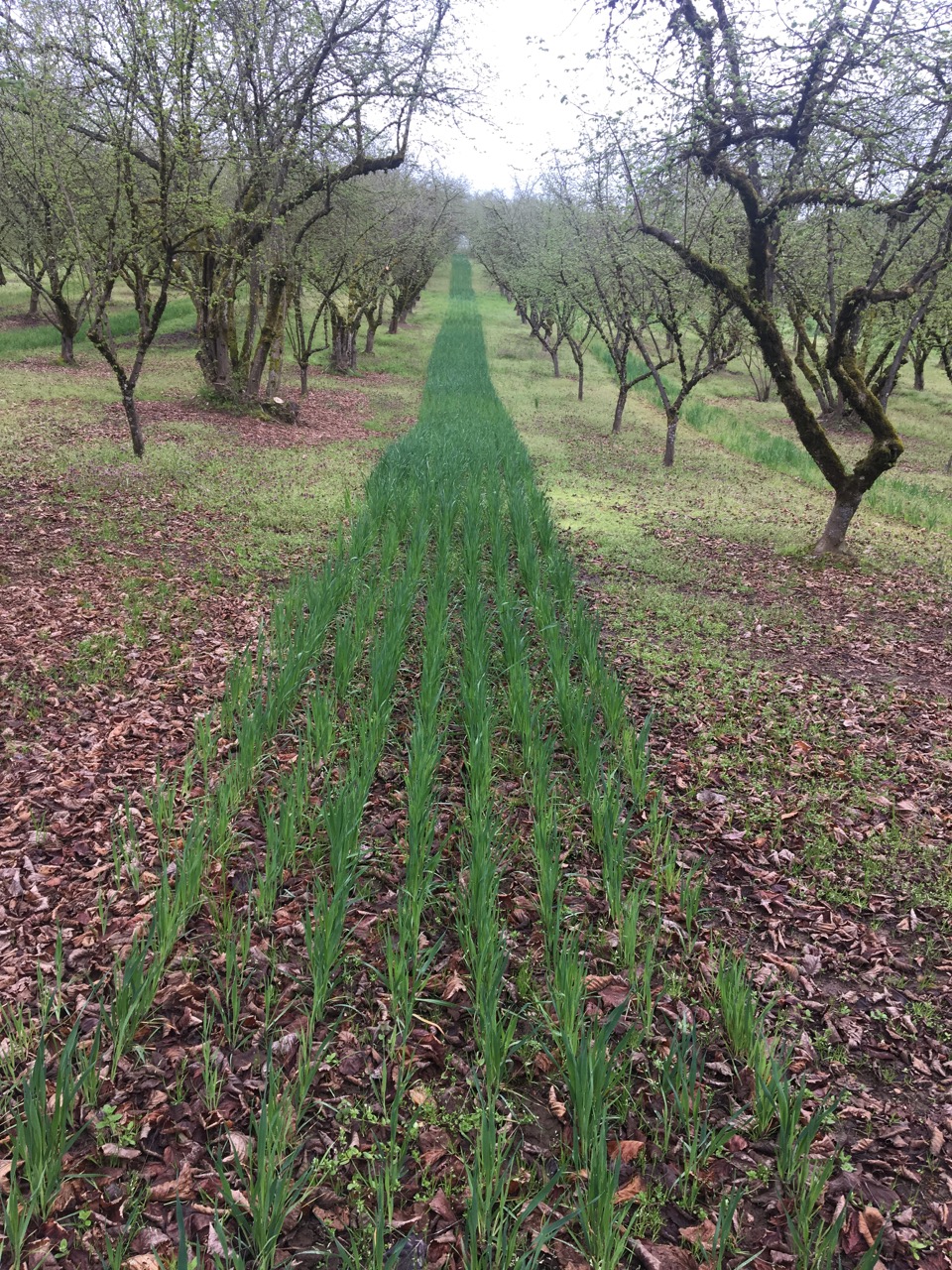
With its clay soils and hilly terrain, Ioka Farms didn’t think it had much choice but to plant a permanent cover crop in its hazelnut orchards.
“We had to have it, because we have this sticky red soil up here in the hills, and if you happen to have a wet year, it is really difficult to pick hazelnuts,” said Doug Duerst, an executive with the Silverton, Ore., farm. “And if we worked everything up and leveled it out, our topsoil would just erode right down to the rocks.”
About 30 miles southwest of Ioka, Matt Hamilton of Rainbow Hill Ranch in Monmouth, Ore., also knows a bit about farming on steep slopes. Even though much of the ground the Hamilton family has converted to hazelnuts is on the farm’s flatter ground, the Hamiltons also prefer to keep their orchard floor covered during winter months.
“It is nice to keep the ground covered,” Hamilton said. “It helps prevent erosion, and you can go out there and you aren’t going to cause soil compaction like you would on bare ground if you have to get out there and spray when there is some moisture.”
The use of cover crops on Ioka Farms and Rainbow Hill Ranch may at one time have been unusual in Oregon hazelnut circles. According to Oregon State University Extension Hazelnut Specialist Nik Wiman, however, that no longer is the case.
“There is a new class of growers coming on now that are using permanent perennial cover between their rows,” Wiman said. “This is kind of a seed change in the industry.”
For the most part, grass crops are the preferred cover crop among hazelnut growers, Wiman said, but that’s not always the case. Some are using nitrogen-fixing crops, like vetches and clovers, to nourish the hazelnut trees.
“They can actually fix a substantial amount of nitrogen that way,” Wiman said. “But it comes with some risk in that meadow voles also really like the legumes, and voles can be a serious problem for orchardists.”
Other growers are letting cover crops volunteer between rows of hazelnut trees. Still others are growing barley or pollinator species like phacelia.
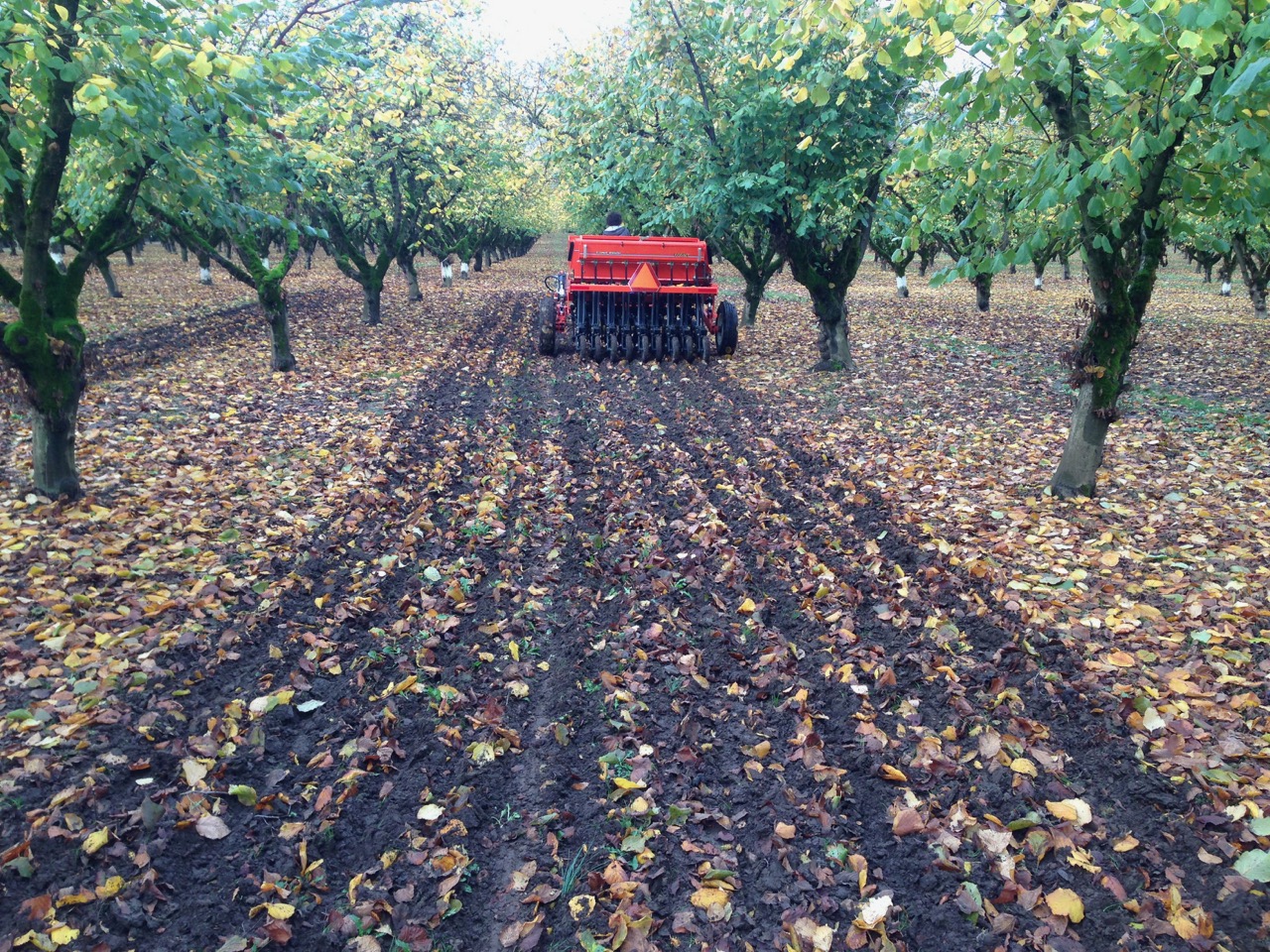
Cover Cropping Tradeoffs
The cover cropping occurring on Oregon hazelnut farms is providing multiple benefits in addition to erosion control, Wiman said. The crops suppress weeds, increase soil’s capacity to take up water and nutrients and they benefit soil health by adding organic matter to soil over the winter months.
“Just soil health in general is improved,” Wiman said.
But there are tradeoffs, he added. Cover crops can compete with trees for available moisture, and harvest can be more difficult when picking nuts up off a cover crop.
As Duerst said, “You kind of have to put a value on what your topsoil is worth, and then figure out if you need to do it or not.”
Growers who are embracing cover crops are finding ways to minimize the downsides. To reduce issues with water competition, some orchardists are ramping up water inputs at certain times of year, or flailing down the cover crop late in the season to encourage its dormancy, something that works particularly well in drought years, Wiman said. Keeping crops mowed and free of thatch and other debris can also minimize issues with harvesting nuts off cover crops.
Certain grass species, such as fine fescues, are better than others at staying clean.
“There are a few different species that are working pretty well particularly when using some of the newer harvest equipment,” Wiman said.
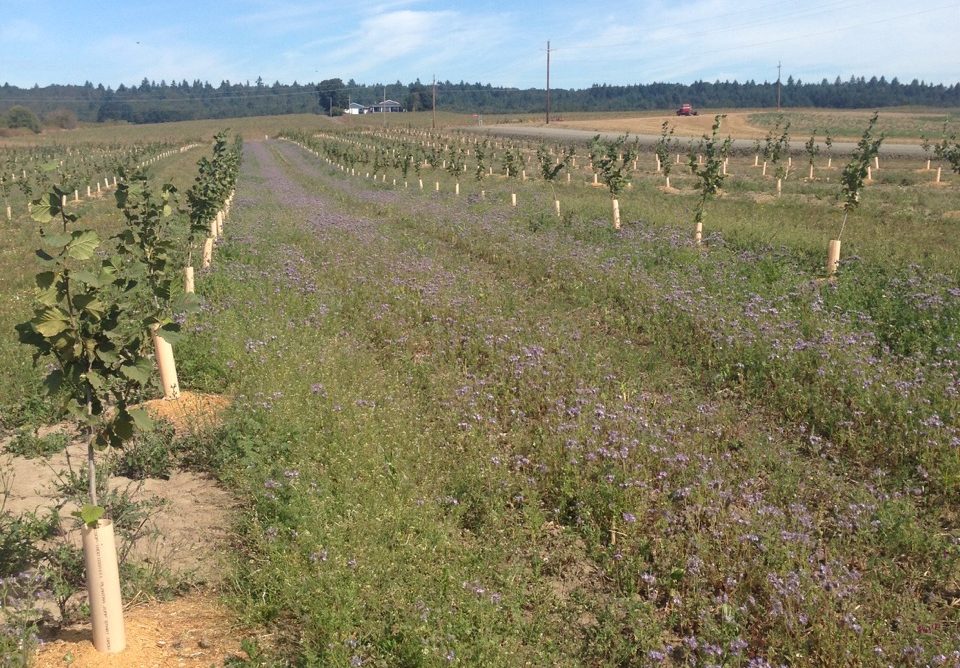
Managing the Cover Crop
Intercropping Hazelnuts
Many Oregon growers are intercropping during the establishment years of hazelnuts, both to minimize issues with erosion and generate some revenue off ground while the hazelnuts mature to bearing stage.
“Intercropping continues to be a popular practice, especially with grass seed growers that are diversifying their farms with hazelnuts,” Oregon State University Extension Hazelnut Specialist Nik Wiman said. “It is a good economic model for getting into nuts.”
In addition to grass seed crops, some growers are intercropping with row crops like strawberries, Wiman said. “People have gotten creative,” he said. “There were a couple of farms last year that had hemp intercropped in hazelnuts.”
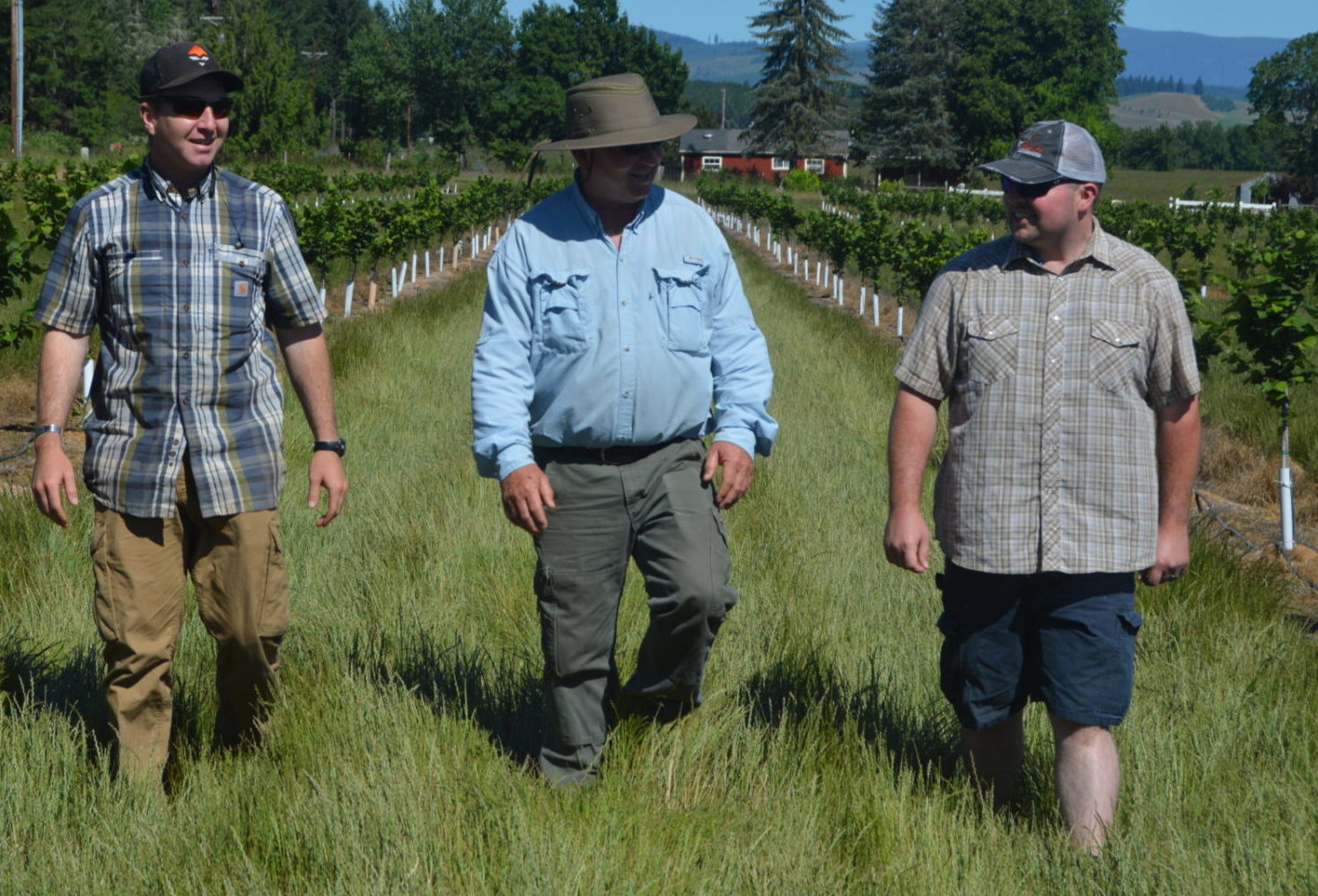
Ioka typically will mow its fine fescue cover crop between three and five times a year, cutting it particularly low in the final cut before harvest.
“We want to get in there as close to nut drop as possible,” Duerst said. “Usually we will get in there in early September, mow it hard, right down to the ground. Prior to that, you just try to keep it at bay.”
Keeping ground level also can be difficult when working with a cover crop.
“We start out with trying to be as level as we can,” Duerst said, “but as you start spraying your trees and driving through those rows, eventually, with the wet weather and everything, you get an unevenness in there, just from the tire tracks. So, we are going to have to deal with that at some point, maybe put in some sand or rejuvenate it.
“We can still pick off it, but if it gets to a point where you can’t, then you are going to have to do something about it.”
Because fine fescues have a long stand life, Ioka has been able to keep its initial cover crop in place since planting its first hazelnut orchard nine years ago. Other growers are pulling out cover crops each year to improve harvest efficiency and reestablishing them after harvest, something that can be difficult given the short duration between the end of harvest and the start of cold, wet winter temperatures that are inconducive to plant development.
“One of our biggest frustrations in research we’ve done into cover crops was getting something to grow,” Wiman said. “Usually for a winter cover crop, you want to plant it in September in the Willamette Valley.
“Maybe this will change a little over time because all the new varieties that we are planting are harvesting earlier than the old Barcelona,” he added. “So, hopefully, that will give us more of a window for planting things.”
Going with a volunteer cover crop can overcome that issue, Wiman said. “The volunteer crops are adapted to coming up pretty fast in the fall.”
Overall, Wiman said he is encouraged to see more growers keeping soil covered in their hazelnut orchard systems.
“I would like to see more orchards with cover,” he said. “We are getting a lot of scrutiny of our industry because people are seeing bare ground and thinking that is a bad thing. But then again, any imperfection on the orchard floor is a place to possibly lose nuts during harvest.
“I understand the grower apprehension, that they feel they need to have the smoothest possible orchard floor for efficient harvest so there are the opposing needs there,” Wiman added. “It is just a matter of figuring out the right combination that is going to work to conserve the soil, enhance soil health and also provide for efficient harvest operations.”
